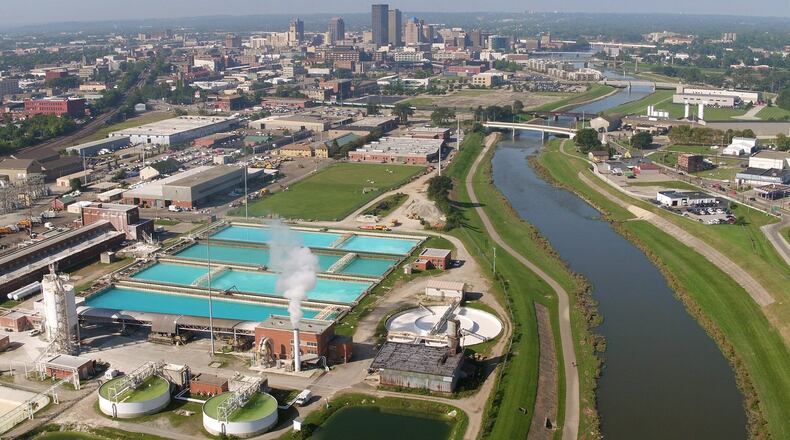The city of Fairborn recently sued 32 chemical manufacturers for allegedly contaminating one of the city’s back-up wells with the chemicals. And in the spring of 2021, the city of Dayton filed its own $300 million lawsuit against Wright-Patterson Air Force Base over water contamination.
The Environmental Protection Agency (EPA) last week proposed to designate two of the most widely used per- and polyfluoroalkyl chemicals — also known as “PFAS” — as “hazardous” under the Comprehensive Environmental Response, Compensation and Liability Act (CERCLA), also known as “Superfund.”
The designation could put polluting businesses and organizations — and even the government itself — on the hook for cleaning contamination, according to supporters of the new rule.
The rule is needed “to give the EPA better tools” to clean contaminated sites and speed the response to new spills, Melanie Benesh, vice president, government affairs at the Washington, D.C.-based Environmental Working Group, said in an online press conference Thursday.
It will also allow the EPA to direct resources “so it is really the polluter who is paying and not the American taxpayer” for remediation of these chemicals, Benesh said.
“Also this designation will really help the EPA hold the Department of Defense (accountable), which is responsible for a lot of contamination from PFOA and PFAS, in the use of firefighting foam,” she said.
Wright-Patterson environmental engineers have steadily probed the presence of PFAS and PFOA chemicals under and around the base.
Firefighting foam containing the chemicals has been used in the base in the past, but a base spokeswoman has said the Air Force in recent years has replaced legacy firefighting foam in emergency vehicles and hangar fire prevention systems with a formula that meets EPA guidelines.
Last year, Ohio Gov. Mike DeWine signed a bill into law prohibiting the use of PFAS-containing foam in firefighter training.
Those substances have been found in amounts above EPA-recommended lifetime health advisory levels near the base, but not in drinking water sources, Raymond Baker, environmental branch chief at Wright-Patterson, has said.
Those levels have been found in either groundwater or surface water, but not drinking water, Baker said in March.
Last year, the Dayton Daily News found that crews at the Dayton International Airport disposed of firefighting foam multiple times in recent years, discharges which followed guidelines in place at the time but which introduced PFAS chemicals into the environment.
On Friday, the EPA said the rulemaking would increase transparency around releases of these chemicals. If approved, the new rule would trigger reporting of PFOA and PFOS releases, the EPA said.
“The proposed rule would, in certain circumstances, facilitate making the polluter pay by allowing EPA to seek to recover cleanup costs from a potentially responsible party,” the agency also said in its announcement Friday.
That announcement followed a June announcement from the EPA, lowering the allowable limits of four types of PFAS in drinking water.
Benesh, in Thursday’s press conference, said the new rule would not ban existing uses of the chemicals, because they have been largely phased out of commerce, and it would impose “minimal new obligations” on PFAS manufacturing.
“It is not going to immediately create new Superfund national priority sites,” she added. “There is an established process that takes time.”
Neither will it create new liabilities for farmers or reopen closed Superfund sites, Benesh also said.
Most people in the United States have been exposed to PFAS because the chemicals have been widely used for more than 80 years, the government has said.
About 800 chemicals have been placed on the federal government’s CERCLA hazardous substances list since the Superfund law was created in 1980.
About the Author

